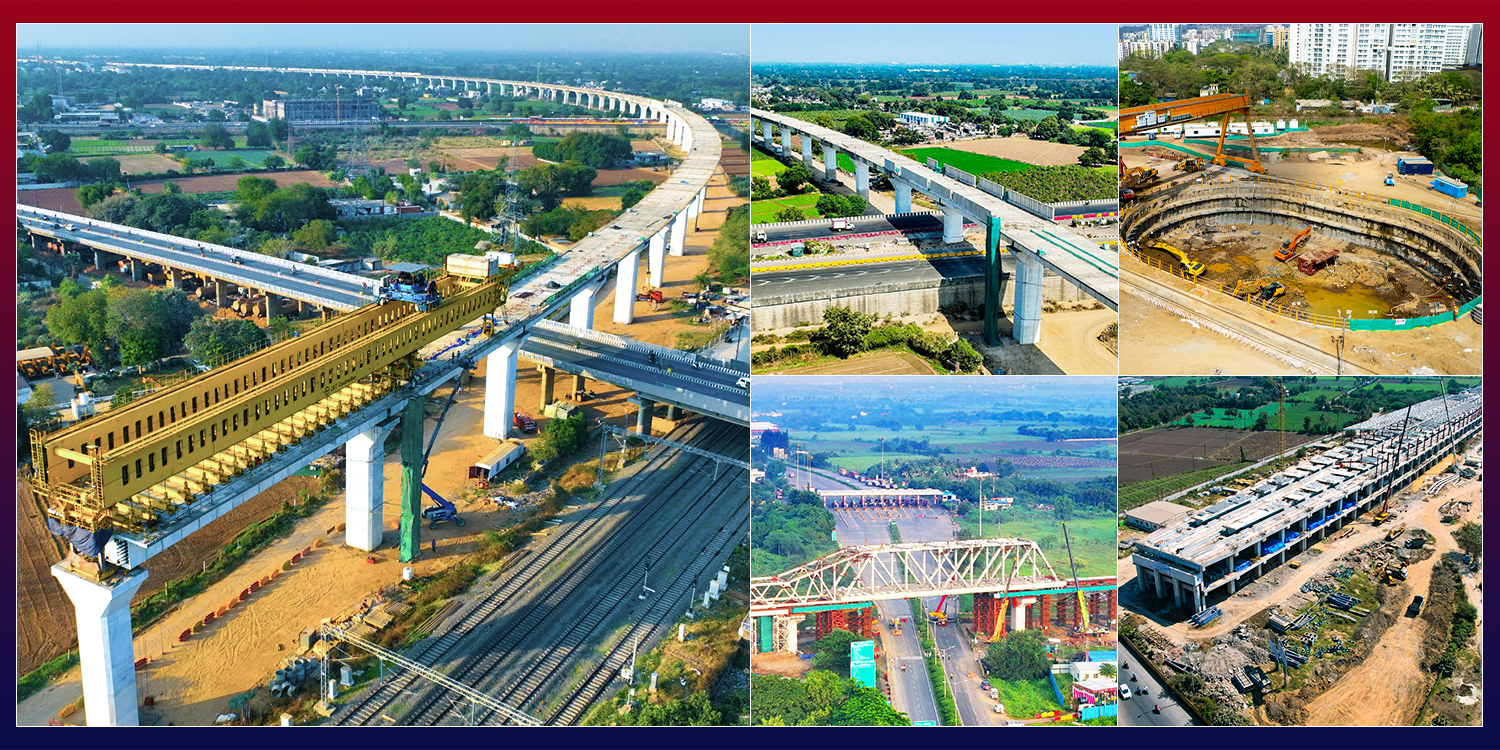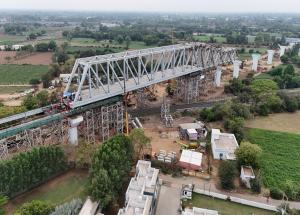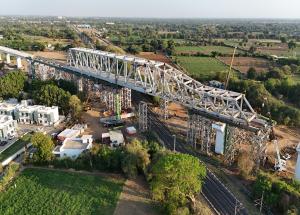The first steel bridge of 100 m length, launched over Vadodara-Ahmedabad main line of Indian Railways, near Nadiad in Gujarat for Bullet Train Project- Mumbai- Ahmedabad Bullet Train Corridor.
Along with Japanese knowhow, India is increasingly utilizing its indigenous technical and material capabilities to build the infrastructure under “Make-in-India” vision. And, this Steel bridge for Bullet Train Project is one of such examples.
This 1486 MT of steel bridge has been fabricated at the workshop in Bhuj district of Gujarat, which is almost 310 km away from location of bridge launching site and was transported on trailers to the site for installation.
At the site, the steel bridge was assembled at a height of 15.5 mtrs from the ground on temporary trestles. Thereafter, the launching nose of 63 m in length and approx. 430 MT weight was assembled with the main bridge assembly. The steel bridge was pulled with automatic mechanism of 2 number of jacks, each of capacity of 180 MT using High Tension strands.
The bridge was pulled in complete traffic and power blocks of Indian railway lines with meticulous planning and precision.
Technical points:
- Length of the main bridge: 100 meters
- Weight of the main bridge: 1486 MT
- Launching nose length: 63 meters
- Launching nose weight: 430 MT
Each production batch of steel was tested by Ultrasonic Testing (UT) at the manufacturer’s premises. The making of steel bridges undergoes high-tech and precise operations of cutting, drilling, welding and painting as per the design drawings prepared by Japanese engineer. The welders and supervisors were certified by International Welding Experts. The welding process is monitored by Japanese International Welding Experts (IWE) stationed at each workshop. Fabricated structure undergoes Check Assembly process and then follows the sophisticated 5- layered painting of the steel structure.
The painting technique adopted for the steel girders is first-of-its-kind in India. It conforms to C-5 Painting system of Japan Road Association’s “Handbook for Corrosion Protection of Steel Road Bridges”. The jointing of steel members is done using Tor Shear Type High Strength Bolts (TTHSB), which are being used first time for any railway projects in India.
This is the second out of the 28 steel bridges completed for the corridor. The first steel bridge was launched across National Highway 53, Surat in Gujarat.
Approximately 70,000 MT of specified steel is used in making of these steel bridges. The length of these steel bridge span varies from 60 meter ‘simply supported’ to 130 + 100 meter ‘continuous span’.
Steel bridges are most suitable to cross Highways, Expressways and Railways lines, unlike pre-stressed concrete bridges, spanning 40 to 45 meters, which are suitable for most sections, including river bridges. India has the expertise of fabricating steel bridges for heavy haul and semi high-speed trains which run between 100 and 160 kmph. Now, the same expertise in fabrication of steel girders will be implemented on MAHSR corridor too which will have a staggering operational speed of 320 kmph.



